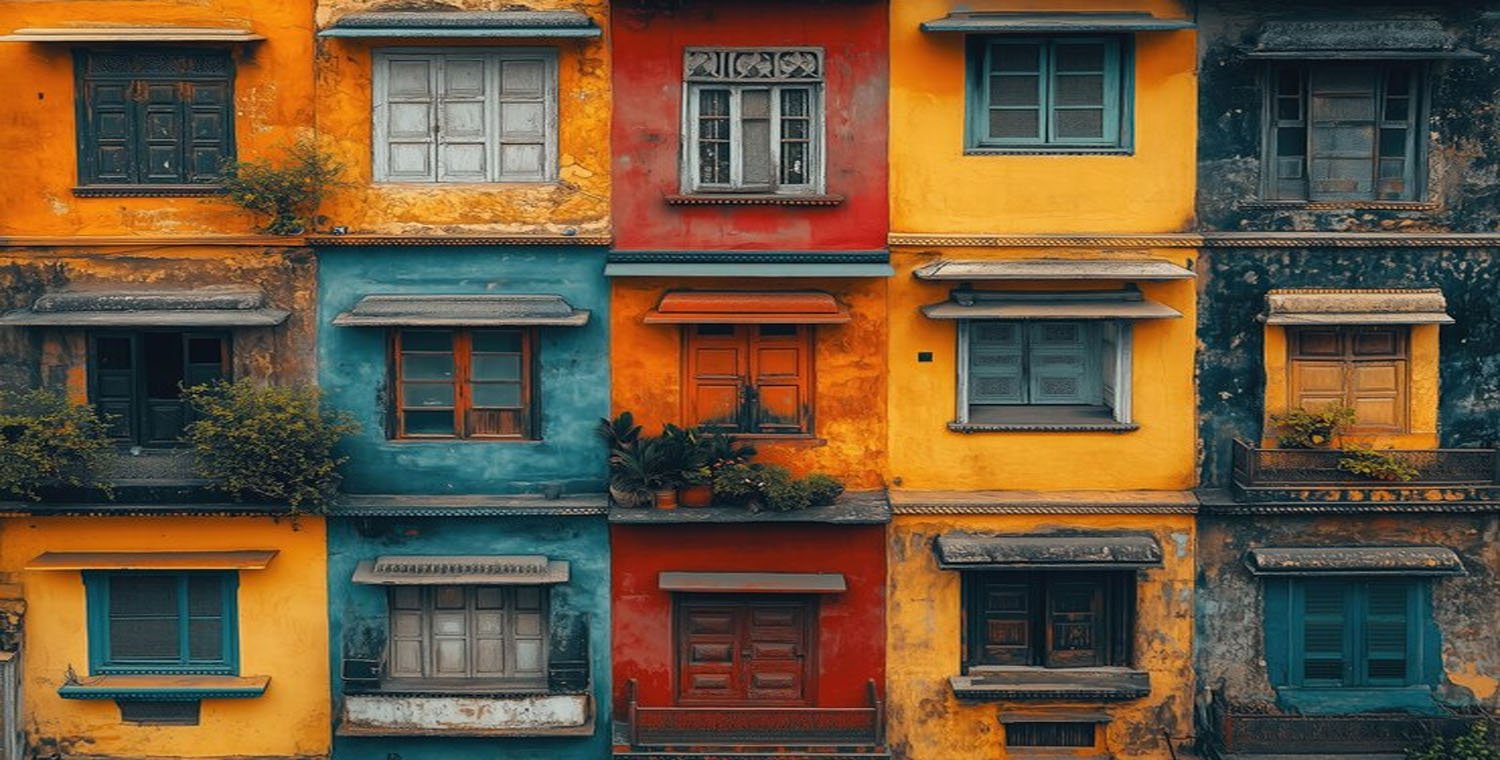When it comes to traditional architecture, the Spanish roof tile style is iconic, instantly recognizable by its warm, earthy tones and unique appearance. One of the defining features of Spanish-style roofs is their use of clay tiles, which are not only visually appealing but also functionally effective in Mediterranean and warm climates. However, like any roofing material, Spanish roof tiles are susceptible to various environmental challenges. Among these is the “Clavas parasite,” a condition that can affect the longevity and aesthetics of Spanish roof tiles.
In this article, we will explore the different colors and styles of Spanish roof tiles, understand the role of Spanish roof tile style colors clavas parasite, and discuss the implications of this parasite on tile durability. By the end, you’ll have a clearer understanding of how to care for and maintain your Spanish roof tiles and preserve their beauty for years to come.
1. What Are Spanish Roof Tiles?

Spanish roof tiles, often called “S” tiles due to their distinctive shape, are made from clay and have been used for centuries in Spanish and Mediterranean architecture. These tiles have evolved over time, but their primary function has remained the same: to provide a durable and weather-resistant roof that reflects the sun and keeps buildings cool. The “S” shape of the tiles ensures that they overlap, creating a water-tight barrier that protects buildings from rain.
The traditional Spanish roof tile is often associated with rural, rustic settings but is widely used in urban buildings as well. The tiles’ color range is one of the key factors that give Spanish architecture its warm and inviting look.
2. The Different Spanish Roof Tile Styles and Colors
The beauty of Spanish roof tiles lies not only in their shape but also in their color palette. The most common colors of Spanish roof tiles are deep reds, burnt oranges, terracotta, and browns. These colors are derived from the natural minerals found in the clay used to make the tiles. However, variations in the firing process and the type of clay can result in slightly different shades of these classic colors.
2.1. Traditional Terracotta Red
The most common color for Spanish roof tiles is the rich, terracotta red that echoes the color of the earth itself. This hue is most often seen in traditional Spanish villages and coastal homes, where the warm tones complement the natural environment.
2.2. Rustic Brown and Ochre
Rustic brown and ochre roof tiles have become increasingly popular in modern interpretations of Spanish roofs. These colors offer a slightly softer look than the bold reds and create a more subdued, earthy aesthetic.
2.3. Aged Patina and Weathered Gray
As Spanish roof tiles age, they often develop a natural patina, resulting in shades of weathered gray. This adds to the rustic charm of Spanish-style buildings and is highly sought after by homeowners who desire the authentic look of a traditional, timeworn roof.
2.4. Light Beige and Soft Yellow
Lighter-colored Spanish roof tiles, such as beige and soft yellow, are often used for homes in Mediterranean-style settings. These colors reflect sunlight, helping to keep homes cooler in warmer climates, while maintaining the classic Spanish aesthetic.
2.5. Custom Colors
Today, some homeowners opt for custom colors in their Spanish roof tiles. Some manufacturers offer a range of shades, from deeper reds to pastel hues, allowing for more personalization and flexibility in design. However, traditional terracotta and rustic shades remain the most sought-after colors for Spanish roof tiles.
3. What is the “Clavas Parasite”?
While the Spanish roof tile style colors are undoubtedly charming, there are environmental factors that can compromise their integrity over time. One of these is the Clavas parasite, a condition that can affect the surface of roof tiles and, in some cases, lead to significant damage.
The Clavas parasite refers to a type of fungal infestation or lichen that can grow on the surface of Spanish roof tiles. Lichens are a symbiotic organism made up of a fungus and an alga or cyanobacterium. They thrive in damp, humid environments and can attach themselves to the porous surface of clay tiles.
3.1. How Does the Clavas Parasite Affect Spanish Roof Tiles?
The Clavas parasite can damage the appearance and structural integrity of Spanish roof tiles in a few different ways:
- Surface Staining: Lichens and fungi can leave unsightly stains on the surface of the tiles, especially when they are left to grow unchecked. These stains are often grayish or greenish, detracting from the warm, vibrant colors that Spanish roof tiles are known for.
- Tile Deterioration: The parasitic growth can cause the tiles to degrade over time. The lichen roots penetrate the porous clay, which can result in cracks, chips, and increased fragility of the tiles. If left untreated, this may shorten the lifespan of the roof.
- Increased Moisture Retention: Lichens can retain moisture on the roof tiles, which can lead to a higher risk of water damage, especially during rainy seasons. This moisture retention can promote further fungal growth and exacerbate the deterioration of the tiles.
3.2. Causes of Clavas Parasite Growth
The Clavas parasite thrives in environments with high humidity and low air circulation. Therefore, it is more common in regions that experience frequent rainfall or high levels of moisture. Coastal areas with salty air and areas shaded by overhanging trees are particularly prone to fungal and lichen infestations.
Other factors that may contribute to the growth of Clavas parasites include:
- Poor Roof Ventilation: Insufficient airflow in the attic or under the roof can create a damp environment that encourages fungal growth.
- Accumulation of Debris: Leaves, twigs, and other organic debris that collect on the roof can trap moisture and provide a perfect breeding ground for the Clavas parasite.
- Aging Tiles: Older, weathered tiles with small cracks and crevices can offer ideal conditions for parasites to take hold.
4. How to Prevent and Treat the Clavas Parasite
While the Clavas parasite can be an unfortunate challenge for homeowners with Spanish roof tiles, there are several ways to prevent and treat this issue.
4.1. Regular Cleaning and Maintenance
One of the most effective ways to prevent Clavas parasite growth is regular roof cleaning. Cleaning the tiles not only removes debris but also reduces the chances of moisture retention on the roof surface. Power washing or using a mild detergent solution can help to remove lichen, moss, and algae buildup. Be sure to hire a professional if you’re not comfortable with high-pressure washing, as it can damage the tiles if done incorrectly.
4.2. Applying Fungicidal Treatments
Fungicides specifically designed for use on roofs are available and can help prevent and control fungal growth. These treatments are typically applied during dry weather and are effective in inhibiting the growth of the Clavas parasite. It is crucial to choose a non-toxic, environmentally friendly fungicide to avoid damaging surrounding plants and wildlife.
4.3. Ensuring Proper Ventilation
Proper roof ventilation is essential to prevent moisture buildup, which creates an environment conducive to fungal growth. Ensure that your roof has adequate ventilation and consider installing ridge vents or soffit vents to improve airflow.
4.4. Regular Roof Inspections
Having a professional roof inspection every few years can help identify any early signs of lichen or fungal growth. Catching these issues early allows for more effective treatment and less expensive repairs.
4.5. Replacing Damaged Tiles
If your Spanish roof tiles are severely affected by the Clavas parasite, it may be necessary to replace some tiles. This ensures that your roof remains structurally sound and visually appealing. When replacing tiles, ensure that you use tiles that match the original style and color to maintain the authenticity of the Spanish roof.
5. The Importance of Proper Roof Care
Spanish roof tiles are a beautiful and durable roofing material, but they require care and maintenance to keep them in top condition. Understanding the various colors and styles available, as well as potential challenges such as the Clavas parasite, is crucial for homeowners who want to preserve the beauty and longevity of their roofs.
Regular cleaning, proper ventilation, and timely treatments can help keep the Clavas parasite at bay and maintain the stunning colors and textures of your Spanish roof tiles. Whether you live in a traditional Spanish villa or a modern Mediterranean-style home, taking proactive steps to protect your roof will ensure it remains a beautiful feature for years to come.
Conclusion
The Spanish roof tile style is celebrated for its timeless beauty and practicality, with an array of colors that evoke warmth and rustic charm. However, like all building materials, Spanish roof tiles can face challenges over time, including the growth of the Clavas parasite. By understanding this issue and taking preventive measures, homeowners can protect their roofs from fungal damage and preserve the aesthetic appeal of their Spanish-style homes.
More Read:
Orformi Cursors: The Future of Customization in Digital Design




